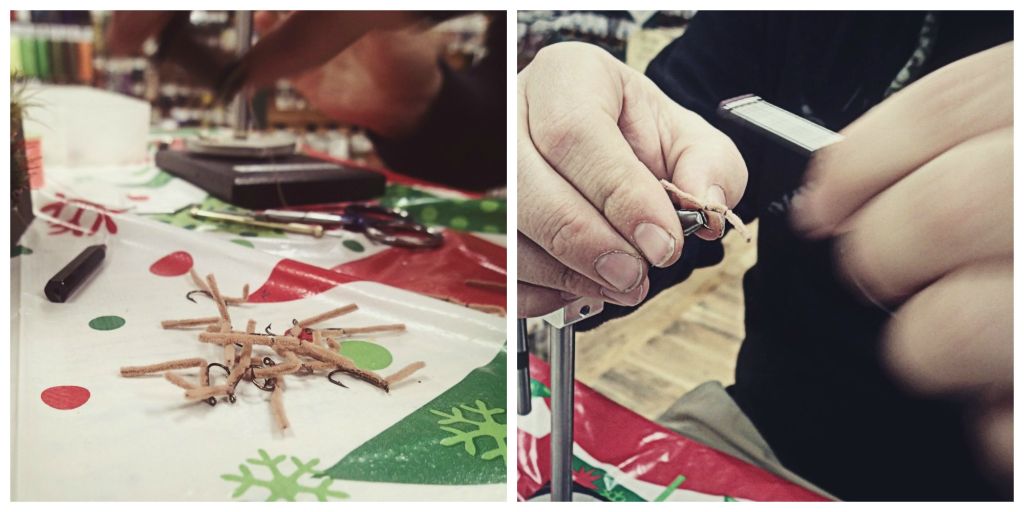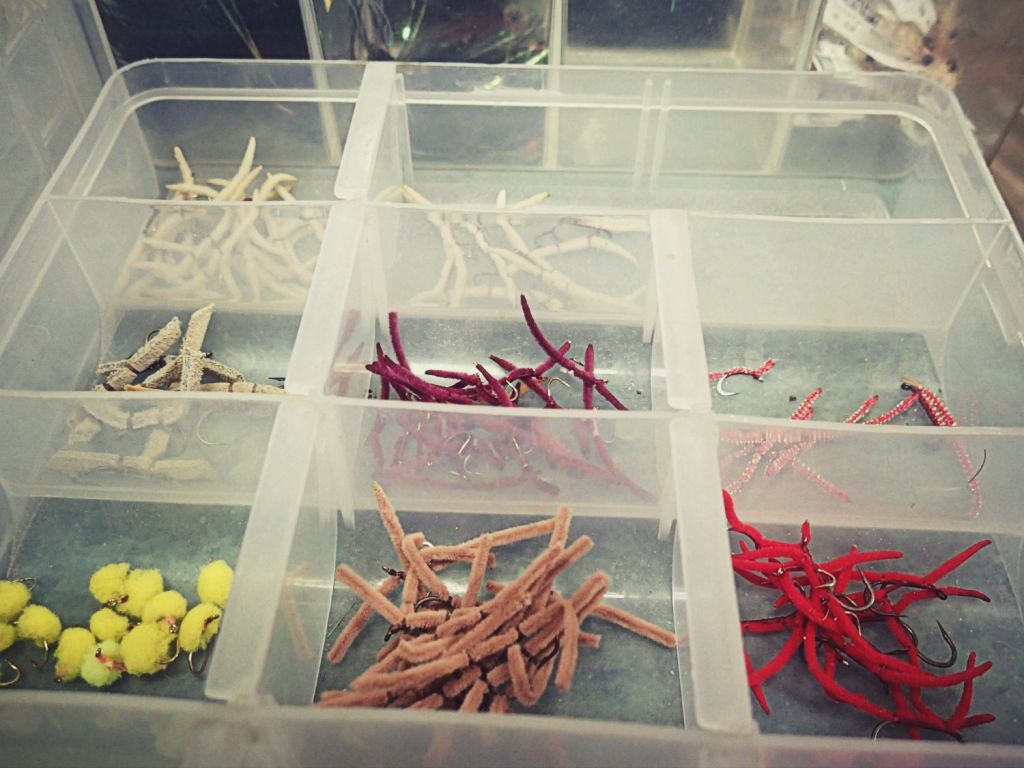Winter, tying season. It’s cold outside, so more of our fishing time has turned to tying time. At home or here in the shop, we are refilling our boxes and fly bins with the bugs that seem to sell or get lost quickest. Since we are guiding and fishing the San Juan River most often, one of the best bugs to get people on fish is the venerable and time tested San Juan Worm. Even today, Jake is cranking some of these slimers out to fill our shop bin.
The San Juan Worm most often represents aquatic worms called annelids. These worms live in almost every river in some form around the globe, and they fish great when flows bump up due to rain or runoff. If you are fishing the San Juan River, just dig your hand into the moss and silt on the river bottom, your sample will probably contain a few hundred annelids.
While it is a love/hate thing with the San Juan Worm for some of us; there is no denying it’s deadly effectiveness. Not only that, but this is the fly that most beginning fly tiers learn to tie first. (It is the first fly we teach in our beginning fly tying class.) The San Juan Worm is single-handedly responsible for sparking the creative desire in many anglers to continue on in their life long journey of fly tying. For some, this is the fly that started it all.
Because of this, it will be the first fly we are going to address here with our continuing fly tying blog series. Subsequent flies we will highlight will probably be more complex in their patterns and techniques used. But if you have to start somewhere, start here. The San Juan Worm will catch you fish.
Oh, and the San Juan worm can be tied in about a million different sizes, colors, and materials. It is always prudent to be creative.
San Juan Worm Fly Pattern
- Hook: Any that suits your needs. We use TMC 2487 in sizes 14, 16, and 18 most often
- Thread: Any color, get creative! We usually use Uni Thread 6/0 and 8/0 in colors Red, Pink, Orange, Brown, and Tan. However, Purple, Yellow, Hot Pink, and Fl. Orange are other good options.
- Body: Most often, we are using Ultra Chenille in Red, Tan, Wine, and Pink. However, Purple, Yellow, Hot Pink, and Florescent Orange make good colors. You can also use Pearl Core Braid, Leather strips, Chamois strips, and Micro Ultra Chenille to make some great San Juan Worms. Heck, get creative and use some fibers from that ugly scarf you got from your aunt last birthday.
(Note that we usually burn the ends of the Ultra Chenille with a lighter to keep it together once we have completed the fly.)
Some even like to add a bead or some lead to the the San Juan Worm to dress it up and make it sink quicker.
The bottom line, the San Juan Worm is a quick and easy tie that anyone can learn in about ten minutes. A favorite of guides, there is no reason why you shouldn’t spin up a few for yourself this winter.











1 Comment